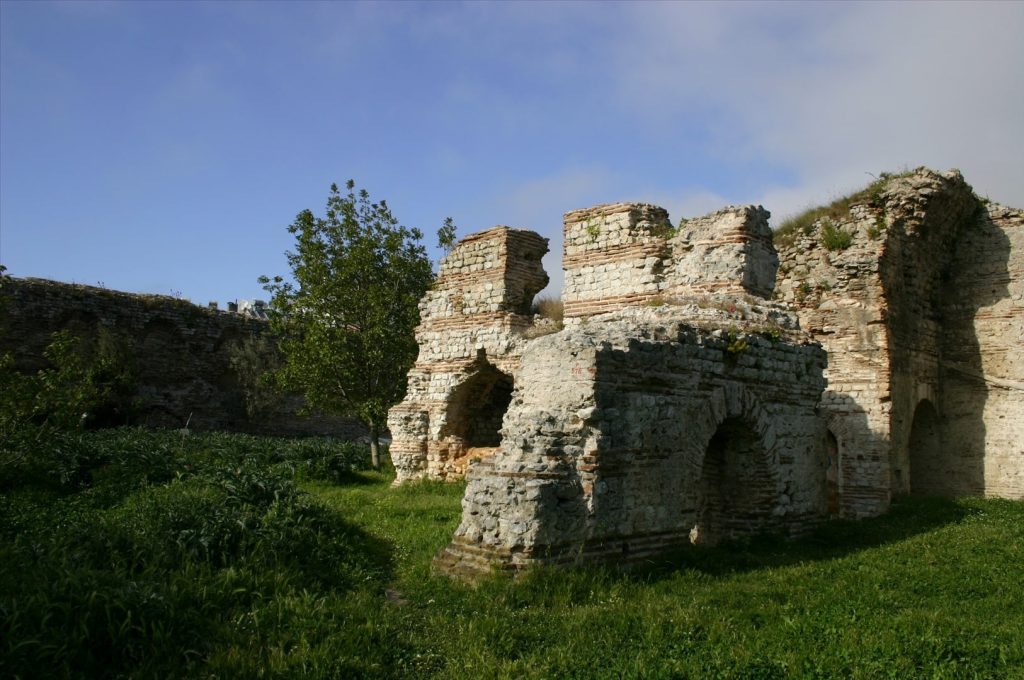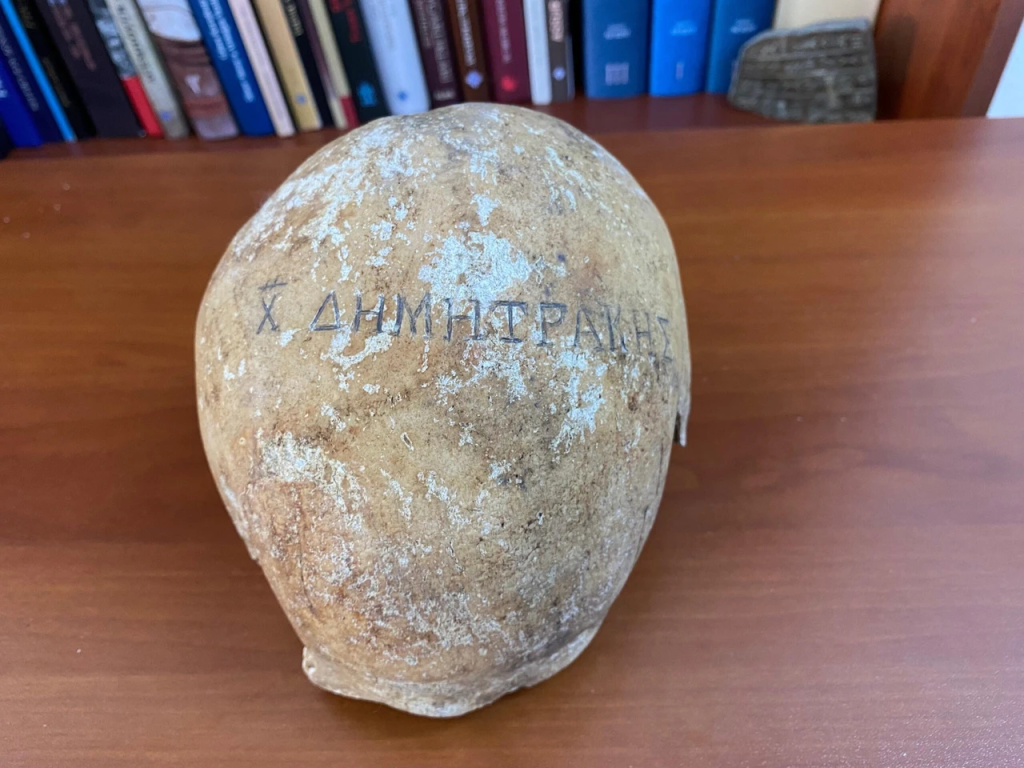
Skull with Greek inscription ‘Pilgrim Dimitrakis’ found in Sinop
A male skull with the Greek inscription “Pilgrim Dimitrakis” was found in the Balatlar Church in Sinop on the Black Sea coast of Türkiye.
The building, known as Balatlar Church or Sinop Koimesis Church, is the only building in the history of Sinop whose identity and usage phases can be determined with the excavations that started in 2010.
The excavations are being carried out under the direction of Prof. Dr. Gülgün Köroğlu. With the excavations, the most comprehensive studies belonging to the Byzantine period are being carried out in Sinop.
The excavations revealed that the building known as Balatlar Church was a Roman Empire bath built in the second century. As a result of the excavations, it was determined that the bath complex including Palaestra, Frigidarium, Tepidarium, Caldarium and Laconicum was used as a church in the late 4th or early 5th century. It is noteworthy that the building was converted into a church at an early period.
📣 Our WhatsApp channel is now LIVE! Stay up-to-date with the latest news and updates, just click here to follow us on WhatsApp and never miss a thing!!

The skull found in the bone section of the church has no other example in Türkiye.
In the examination conducted under the direction of Assoc. Prof. Dr. Mustafa Tolga Çırak, Head of the Department of Anthropology at Hitit University Faculty of Arts and Sciences, it was determined that the skull belonged to an Orthodox cleric who went on pilgrimage to Jerusalem.
The inscribed skull has an important place for the scientific world as one of the most interesting practices as well as being one of the latest examples of the skull cult dating back thousands of years in Anatolia. The inscribed skull reveals that the cultures in Anatolia did not disappear even after thousands of years, but continued by changing form in different communities.
Assoc. Prof. Dr. Mustafa Tolga Çırak said that there is no other example of an inscribed skull in Türkiye.
Assoc. Prof. Dr. Mustafa Tolga Çırak said, “The historical building is not known as a bathhouse among the people, but as a church. The building community was used as a service area during the Roman, Byzantine, Seljuk and Ottoman periods. Balatlar Church was converted into a cemetery during the last period of the Ottoman Empire from the 17th century to the 20th century. Burial activities were carried out intensively, especially in the garden and interior of the church. The church became the cemetery of the Orthodox.”

Pointing out that no example of an inscribed skull was found in any excavation in Anatolia, Çırak said, “The tradition of writing on the skull did not exist in Anatolia. No such example was found in any excavation.However, we knew that there were similar examples in Greece and Egypt, but this is an important finding for us as it is the first in Anatolia. The ritual of writing on the skull is one of the important Orthodox burial traditions. According to this tradition, the skull of the deceased is removed and then the name of the person is written on the skull with a hard object.Here you can see that the name is neatly written on the skull.After the writing process, the skull was placed on a shelf in the relevant section of the church for display.There are examples of this in Greece and Egypt.”
Noting that rituals with skulls have been seen as far back as the Neolithic period, Çırak said, “The custom of keeping the skull separate from the rest of the skeleton and honoring it seems to have continued in various forms throughout prehistoric times, probably starting as early as the Early Paleolithic period. Culturally, this has found its place as a ritual among the Orthodox. The skull has been dated to the 19th century. Some archaeological objects and coins found next to it say that this person lived in the 19th century.”
Source:O. HETTO, G. KÖROĞLU, N. ÇORAĞAN, 2022 “Mosaic Panel from Sinop Balatlar Church on the Refrigerator and its Place in Byzantine Iconography”,
DOI:10.26650/artsanat.2022.17.946096
You may also like
- A 1700-year-old statue of Pan unearthed during the excavations at Polyeuktos in İstanbul
- The granary was found in the ancient city of Sebaste, founded by the first Roman emperor Augustus
- Donalar Kale Kapı Rock Tomb or Donalar Rock Tomb
- Theater emerges as works continue in ancient city of Perinthos
- Urartian King Argishti’s bronze shield revealed the name of an unknown country
- The religious center of Lycia, the ancient city of Letoon
- Who were the Luwians?
- A new study brings a fresh perspective on the Anatolian origin of the Indo-European languages
- Perhaps the oldest thermal treatment center in the world, which has been in continuous use for 2000 years -Basilica Therma Roman Bath or King’s Daughter-
- The largest synagogue of the ancient world, located in the ancient city of Sardis, is being restored











Leave a Reply